An aquarium of 40 liters is a real milestone in the development of an aquarist. This is the same volume in which it is already possible to try to establish a stable equilibrium for a more or less long time.
Features
An aquarium with a volume of 40 liters can be of various shapes: low, high and narrow, classic, it can be round, and even hexagonal.
For a decorative aquarium, a large front wall is important, providing an overview of the entire reservoir. For an aquarium with a volume of 40 liters, the dimensions can be as follows: length 55 cm, then, respectively, the height and width will be 27 cm.
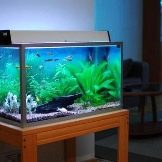
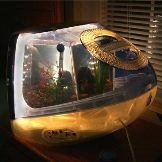
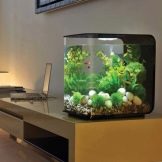
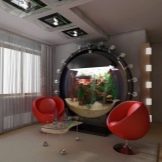
A low aquarium is usually less decorative, but it may be more convenient if you need to adjust it to your existing furniture. Often low aquariums are used as spawning ponds.
For an aquarium of 40 l, the following sizes are preferable: 24, 24, 72 cm.
Sometimes they resort to a special form of the aquarium, the height of which is much more than the classic one. For a 40-liter pond, the proportions can be as follows: with a width of 20 cm, a height of 70 cm and a length of about 30 cm. Such reservoirs are called wall-mounted, it is convenient to place them in specially equipped wall niches, quite often such aquariums serve as original transparent decorative partitions.
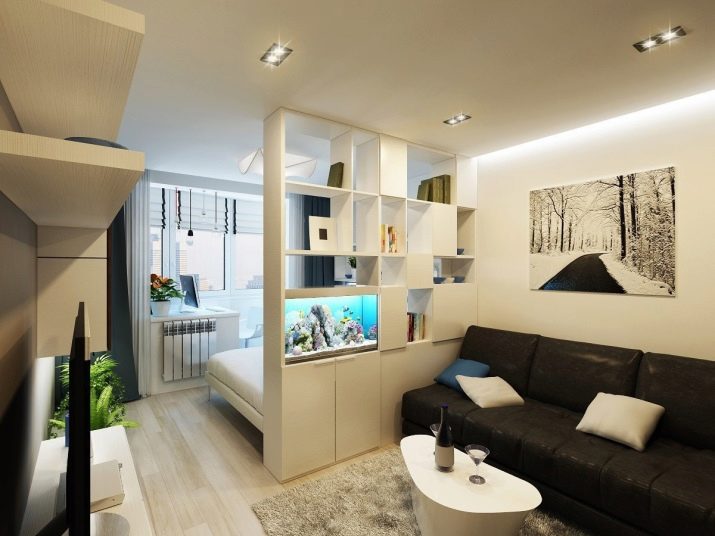
Aquariums of these three types can most often be purchased ready-made. Currently, you can see both hexagonal and prismatic aquariums, even with a curved front wall. They can look very impressive. And proportions can be determined by the needs of the interior decoration of a room or office.
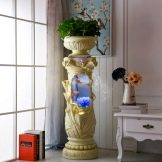

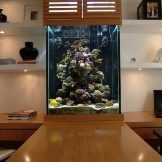
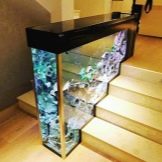
Equipment selection
For the successful launch and subsequent maintenance of an artificial reservoir with a sustainable ecological system, the preparation of appropriate equipment is necessary. A standard set of required accessories looks like this:
- compressor;
- heater;
- lamp;
- filter.
The equipment is specially distributed alphabetically, since it is not easy to select the most important components.
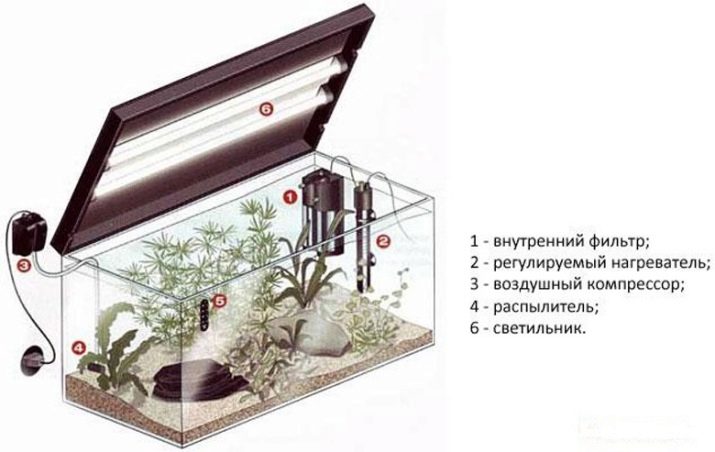
However, in the process of launching a new aquarium, the first thing you need to mount aeration system. Make it easy. You will need a compressor with a capacity corresponding to the volume of the aquarium. Through a special flexible hose, which can be in the compressor kit or purchased in the same store, air is supplied to the atomizer, which also does not make it difficult to obtain.
The sprayer is placed at the bottom of the aquarium, the soil is laid out at the same time, and the stones are placed so as to partially mask the tube that supplies air to the sprayer. The best place for a spray in the center of the aquarium, although this is not important. Air supply is necessary for saturation of water with gases, primarily oxygen and carbon dioxide, which ensures the development of microorganisms in water and soil. In addition, the flow of bubbles creates the movement of water in the aquarium, contributing to the uniform distribution of all hydrochemical parameters.
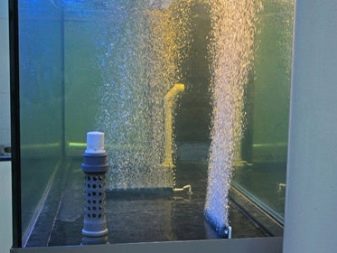
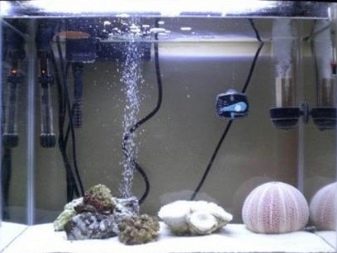
If the aquarium is supposed to be populated by tropical plants and fish, you will have to consider a heating system.
Currently there is no need to invent complex electrochemical heaters, as they did half a century ago. In any store with goods for an aquarium, you can purchase a modern, reliable and safe heater, choosing it depending on the required volume.
Heating is not always required., you can pick up the inhabitants, quite costing room temperature, such an aquarium is called cold-water. But then the path of tropical exotic to this reservoir will be closed.
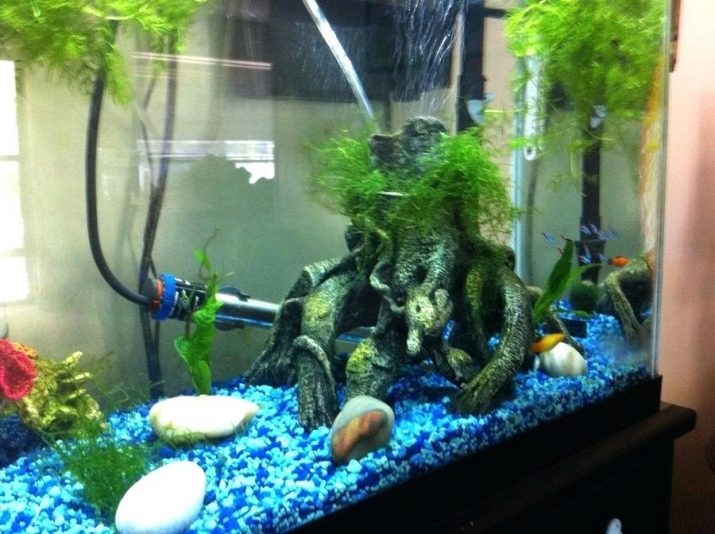
Further, when planting plants it is necessary that the lighting system be mounted. Often in pet stores ready-made lamps are already sold, mounted in the decorative cover of an aquarium in standard sizes. The power of the lamps must also be selected in accordance with the size of the reservoir. Not only the volume of water is important, but also the depth. Lack of light can cause plant depression. Excessively bright lighting can trigger the growth of green algae, which will gradually reduce the transparency of the aquarium glass.
You can get a good result, experimenting with LED tapes. The combination of cold and warm white shades will imitate daylight, and the additional inclusion of a blue-red ribbon in the backlight system will help saturate the spectrum with red and purple rays necessary for plants.
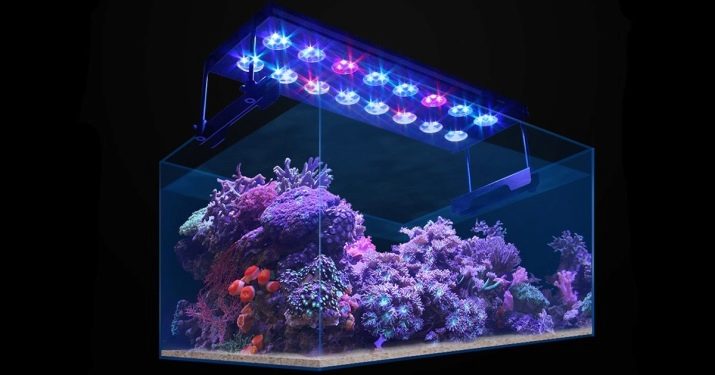
Before large inhabitants have to appear in the aquarium: fish, snails or crustaceans, the life support system of an artificial reservoir must be supplemented by a filtration system. The filter, as a rule, is connected through a special tee to the compressor. The current of air, carrying water along with it, directs it to the filtering elements. They can be different: from a simple foam filter immersed in an aquarium to a complex outdoor filter into which water is supplied by an air lift. Wherein You cannot completely direct air from the compressor to the filter. With the help of control valves, it is necessary to separate it, so that simultaneously with the filter the sprayer continues to function.
The correct selection of equipment will allow not only to start biochemical processes in an artificial reservoir, but also to maintain them at the optimum level with timely care for many years, even in a 40-liter reservoir.
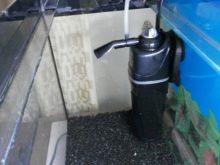

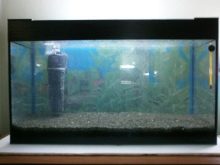
Design options
The modern design of aquariums implies maximum imitation of nature.Plastic and ceramic castles, sculptures, colored soil and artificial plants are gone, although they also occur, for example, in aquariums with some goldfish.
An indiscriminate heap of diverse plants and stones of different shapes and sizes is still unacceptable, the aquarium should please, attract the eye, arouse interest.
All this can be achieved only by carefully considering the interior of the reservoir before it is filled with water. It is not necessary to completely mask the equipment, because the existence of plants and fish in the aquarium is ensured by the care and skills of the aquarist, and hiding it is still useless.
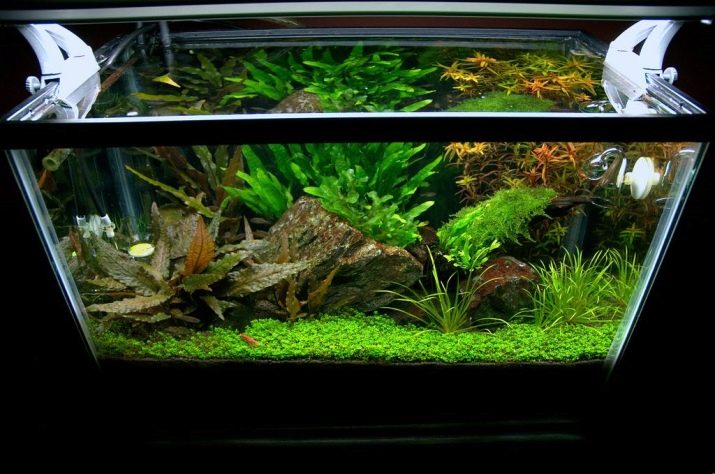
One of the design rules is zoning the volume with the help of plants and stones. As a rule, there is free space near the front glass where the most active and attractive fish will swim. Starting from the middle, the bottom is planted with relatively low separately growing plants. Long-leaved plants, for example, vallisneria, will look good along the side walls and near the rear corners.
Abundantly branching bushy plants (elodea, kabomba, hygrophile) are usually located along the back wall. Large plants that require a special soil composition can be placed in small pots covered with stones, or without masking closer to the side walls.
The soil layer also needs to be increased from the front glass to the rear.
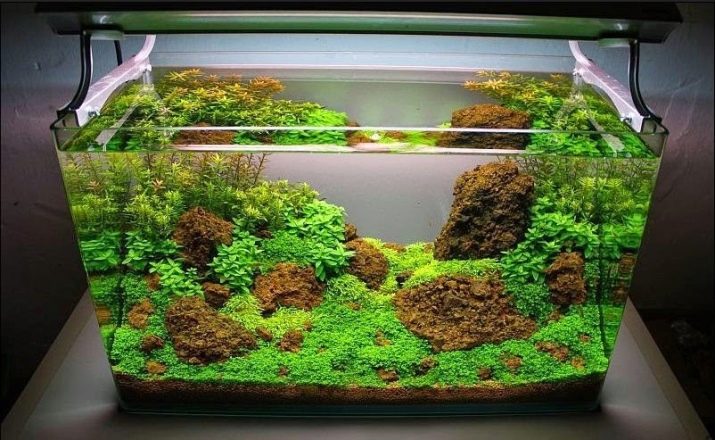
Stones can be useful as a material for creating a terrace. This method allows you to distribute the soil without unnecessarily replacing the volume, leaving a thin layer where there are no plants and creating a sufficient layer of loose material to form the root system.
If the conditions of a river with a fast flow are simulated in the aquarium, which can be achieved by installing a special pump, the plants, in general, may turn out to be superfluous, in this case, the interior of the aquarium is equipped with stones. The observer's attention in this case is completely concentrated on active and moving fish playing in the jets of artificial currents.

One can not help but mention another type of artificial reservoir - garden aquarium. Plants become the main ones in it, they can be selected according to the geographical (from one region) or ecological (similar habitat) principle. Fish in such a reservoir take a subordinate role and are selected for reasons of benefit for plants growing in the garden.
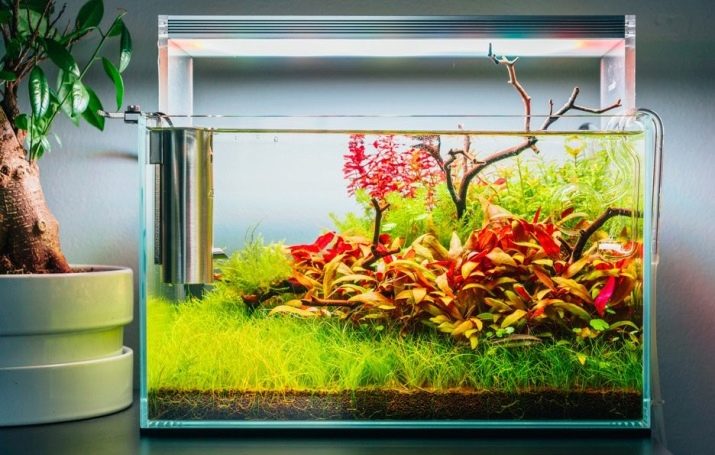
Which fish are suitable?
Not all fish can be kept in a 40-liter aquarium. Of course, almost any aquarium fish can be accommodated there, but when they grow up, some of them, sooner or later, will either begin to experience stress and die, or they will try to supplant less agile neighbors, which is why they are also likely to die. And also keep in mind that among aquarium fish, there are predators and fish with a heightened territorial instinct, showing aggression to all who invade their territory. In a reservoir with a volume of 40 liters, these contradictions can cause serious disappointment.
Choosing the inhabitants for your aquarium, you need to take an interest not only in their appearance, but also in the behavior and compatibility with other fish.

Peaceful guppies and neons are definitely suitable for such an aquarium. A flock of up to 16 individuals may be optimal. Larger swordsmen and mollies will only feel comfortable in the amount of three pieces. A flock of moving Sumatran barbs or zebrafish of more than 8 may be cramped. A flock of gourami of 3 fish will be enough. For such a volume there will be enough two catfish of ancistrus and no more than 4 speckled catfish.
Goldfish, most cichlids, large catfish will not be able to provide comfortable conditions in 40 liters, and the fish put there at a young age will die when they grow up.
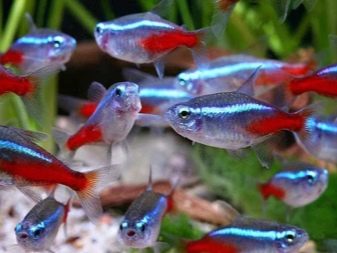
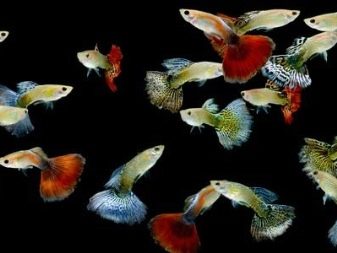
You can learn more about how to care for plants in a 40 liter aquarium so that they do not hurt and delight you, from the video below.










